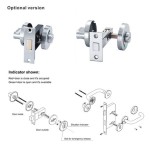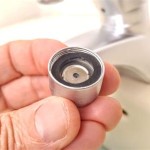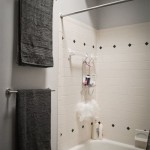How to Replace a Bathroom Sink and Faucet
Replacing a bathroom sink and faucet can be a significant upgrade to your bathroom, enhancing its functionality and aesthetic appeal. This process can seem daunting, but with careful planning and the right tools, it's a manageable DIY project. This guide will outline the necessary steps to replace a bathroom sink and faucet successfully.
Step 1: Gather Supplies and Tools
Before starting the project, ensure you have all the necessary supplies and tools at hand. This will make the process smoother and prevent delays. Here's a list of essentials:
- New bathroom sink and faucet
- Adjustable wrench
- Channel-lock pliers
- Plumber's putty
- Caulk gun
- Silicone sealant
- Level
- Measuring tape
- Utility knife
- Screwdriver set
- Bucket
- Shop towels
- Safety glasses
- Work gloves
It's essential to choose a sink and faucet that complement your bathroom's style and meet your needs. Consider factors such as size, material, and features to make the right selection.
Step 2: Disconnect the Old Sink and Faucet
The first step is to disconnect the old sink and faucet. This involves shutting off the water supply, disconnecting the plumbing, and removing the sink from the countertop.
- Turn off the water supply to the sink. Locate the shut-off valves beneath the sink and turn them clockwise to fully close the water flow.
- Disconnect the water supply lines. Use a wrench or channel-lock pliers to loosen and remove the nuts connecting the supply lines to the faucet. Place a bucket beneath the faucet to catch any remaining water.
- Disconnect the drainpipe. Detach the drainpipe from the sink's drain opening. If necessary, use a wrench to loosen the drainpipe's nut.
- Remove the sink from the countertop. Unscrew the mounting bolts securing the sink to the countertop and carefully lift the sink away. Be sure to support the sink to avoid damage.
Once the old sink and faucet are removed, thoroughly clean the countertop and surrounding area to prepare for the new installation.
Step 3: Install the New Sink
Installing the new sink starts with securing it to the countertop and connecting the drainpipe.
- Apply plumber's putty to the sink's drain opening. Roll out a small amount of plumber's putty into a rope shape and press it around the drain opening to create a watertight seal.
- Position the new sink in place. Carefully lower the sink onto the countertop, ensuring it aligns with the cutout and is level. Align the drain opening of the sink with the drainpipe.
- Secure the sink to the countertop. Screw the mounting bolts through the sink's mounting holes and into the countertop. Tighten the bolts evenly to secure the sink.
- Connect the drainpipe. Attach the drainpipe to the sink's drain opening, ensuring a secure connection. If needed, use a wrench to tighten the drainpipe's nut.
After installing the sink, it's time to move on to the new faucet.
Step 4: Install the New Faucet
Installing the new faucet involves attaching it to the countertop and connecting the water supply lines.
- Install the faucet mounting plate. Position the faucet mounting plate on the countertop and secure it using the provided screws. Ensure the plate is level.
- Attach the faucet to the mounting plate. Align the faucet with the mounting plate and secure it using the provided screws. Ensure the faucet is firmly attached and level.
- Connect the water supply lines. Connect the water supply lines to the faucet's inlets. Use wrenches to tighten the nuts connecting the lines to the faucet. Make sure the connections are secure and leak-free.
- Turn on the water supply. Slowly open the shut-off valves beneath the sink to allow water to flow to the faucet. Check for leaks at the faucet connections and supply lines.
Once the faucet connections are secure and leak-free, test the faucet by running water through it to ensure proper functionality.
Step 5: Finish Up
After installing the sink and faucet, finalize the project by applying sealant and cleaning the area.
- Apply sealant around the sink. Use a caulk gun to apply silicone sealant around the edge of the sink where it meets the countertop. This creates a watertight seal and prevents leaks. Smooth the sealant with a damp finger for a clean finish.
- Clean up the area. Wipe away any excess sealant, plumber's putty, or water residue with a damp cloth. Dispose of any waste materials appropriately.
With the sink and faucet installation complete, you can enjoy your upgraded bathroom with enhanced functionality and style. If you encounter any issues during the installation process, consult a professional plumber for assistance.

Diy How To Replace And Install A Bathroom Sink Faucet

Diy How To Replace A Bathroom Sink Faucet Remove Install

How To Replace A Bathroom Faucet Removal And Installation

How To Replace A Bathroom Faucet Removal And Installation

How To Remove Bathroom Faucet Easy Simple

How To Replace A Bathroom Sink Faucet

How To Replace A Sink Faucet Ahs

How To Fix A Bathroom Faucet 14 Steps

How To Install A Bathroom Faucet Diy Guide

How To Replace A Bathroom Faucet Home Repair Tutor
Related Posts







